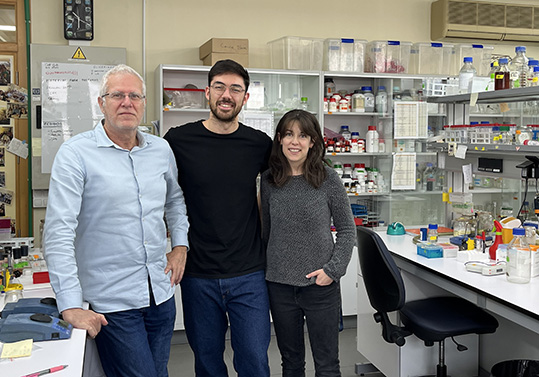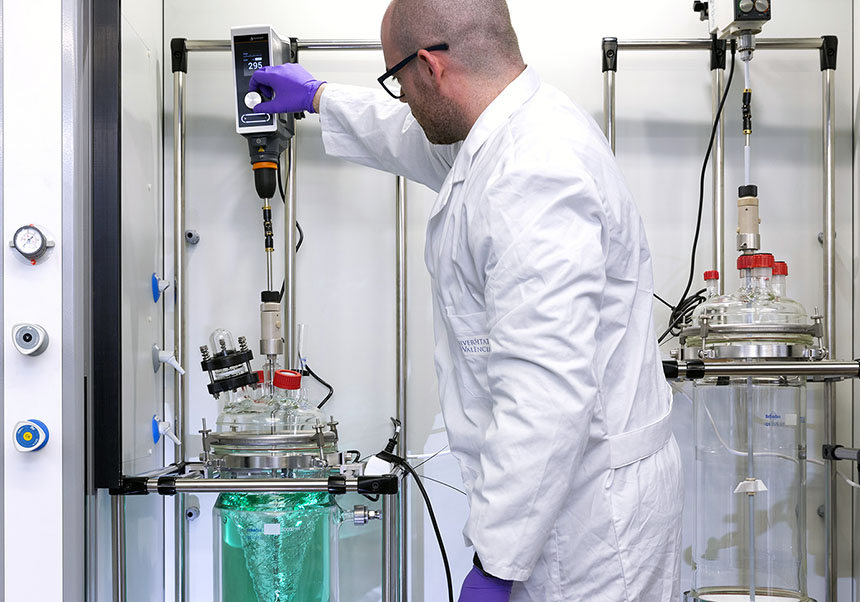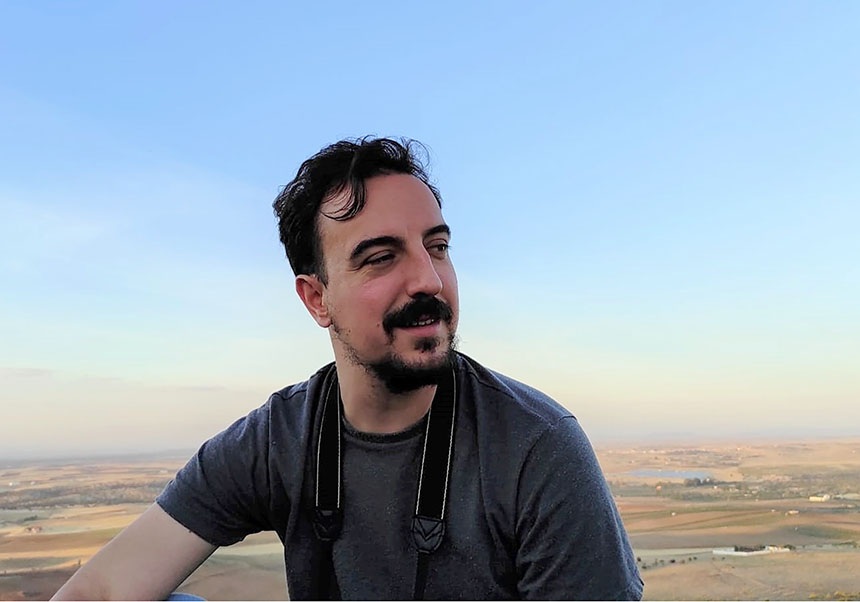A group of the Universitat identifies new mechanisms for cell-division cycle control in response to stress
- Press Office
- March 11th, 2025

A research carried out by a Cell Cycle team at the Institute for Biotecnology and Biomedicine Research of the Universitat de València has discovered a mechanism that allows yeast cells temporarily stop their division as a response to damage to the cell wall. This study, publish in Cell Communication and Signaling magazine, might open new ways to understanding similar processes in human cells, with potential implications for the treatment of cancer and other illnesses.
The team focused on two key proteins, Whi7 and Whi5, which act as brakes in the transition to the replication phase of the cell cycle of the yeast Saccharomyces cerevisiae. Under normal conditions, Whi5 is the main regulator. However, when yeast faces stress to the cell wall —caused, for example, by agents that damage its structure— the levels and activities of Whi7 rise significantly.
The researcher Mihai Spiridon explains that “we’ve found a mechanism that specifically increases its functions as Start repressor Whi7, and not Whi5, in stress conditions, which is a good example of functional redundancy proteins and their specialisation in specific conditions. a strategy more and more relevant to understand cell physiology.
“We’ve observed that, in these unfavourable conditions, not only does the quantity of Whi7 increases, rather its ability to binding to genes that drive cell division gets significantly stronger,” Mercè Gomar-Alba explains, director of the paper and Biochemistry and Molecular Biology professor. This increase in the actions of Whi7 induces a detection in the G1 phase of the cell cycle, allowing the cell to repair any damage and adapt to the environment before resuming its growth.
This study was carried out by using the budding yeast Saccharomyces cerevisiae, since cell cycle control mechanisms are highly preserved among yeasts and mammals. Whi7 and Whi5 are functional equivalents of the retinoblastoma family of proteins of, tumour suppressor in mammals. Mercè Gomar comments that “basic research in yeasts helps us analyse and understand complex biological problems that cause illnesses such as cancer, where the proper functioning of the regulation of cell proliferation is lost. In this sense, the current study shows us the surprising sophistication of the regulatory mechanisms yeast has, which gives strength to the cell-cycle control system and brings it closer to that of more complex multicellular organisms. In the future, they intend to research if the functional specialisation of Whi7 regarding stress to the cell wall also happens in other conditions where cell viability is compromised. In addition, the study opens the door to future research for the exploration if similar mechanisms operate in human cells and how we could use it to design more specific and effective therapies against illnesses related to the loss of control in the cell cycle.
The Regulation of the Cell Cycle in Eukaryotes group belongs to the University Institute for Biotechnology and Biomedicine Research (BIOTECMED) of the Universitat de València and the Department of Biochemistry and Molecular Biology of the Faculty of Biological Sciences. They carry out basic research in one of the most interesting areas of molecular and cellular biology, such as cell-cycle control. Throughout the years, they have focused on different processes and has characterised new control mechanisms for the function of cell-cycle regulators such as cyclins, transcriptional repressors or factors; currently they are also working on the regulatory mechanisms of the DNA integrity ‘checkpoint’, process directly related to the development of cancer.
Reference: Mihai Spiridon-Bodi, Cristina Ros-Carrero, J. Carlos Igual & Mercè Gomar-Alba. Dual regulation of the levels and function of Start transcriptional repressors drives G1 arrest in response to cell wall stress. Cell Communication and Signaling (2025).
DOI: https://doi.org/10.1186/s12964-025-02027-z
PDF of the article: https://rdcu.be/eaE6W















